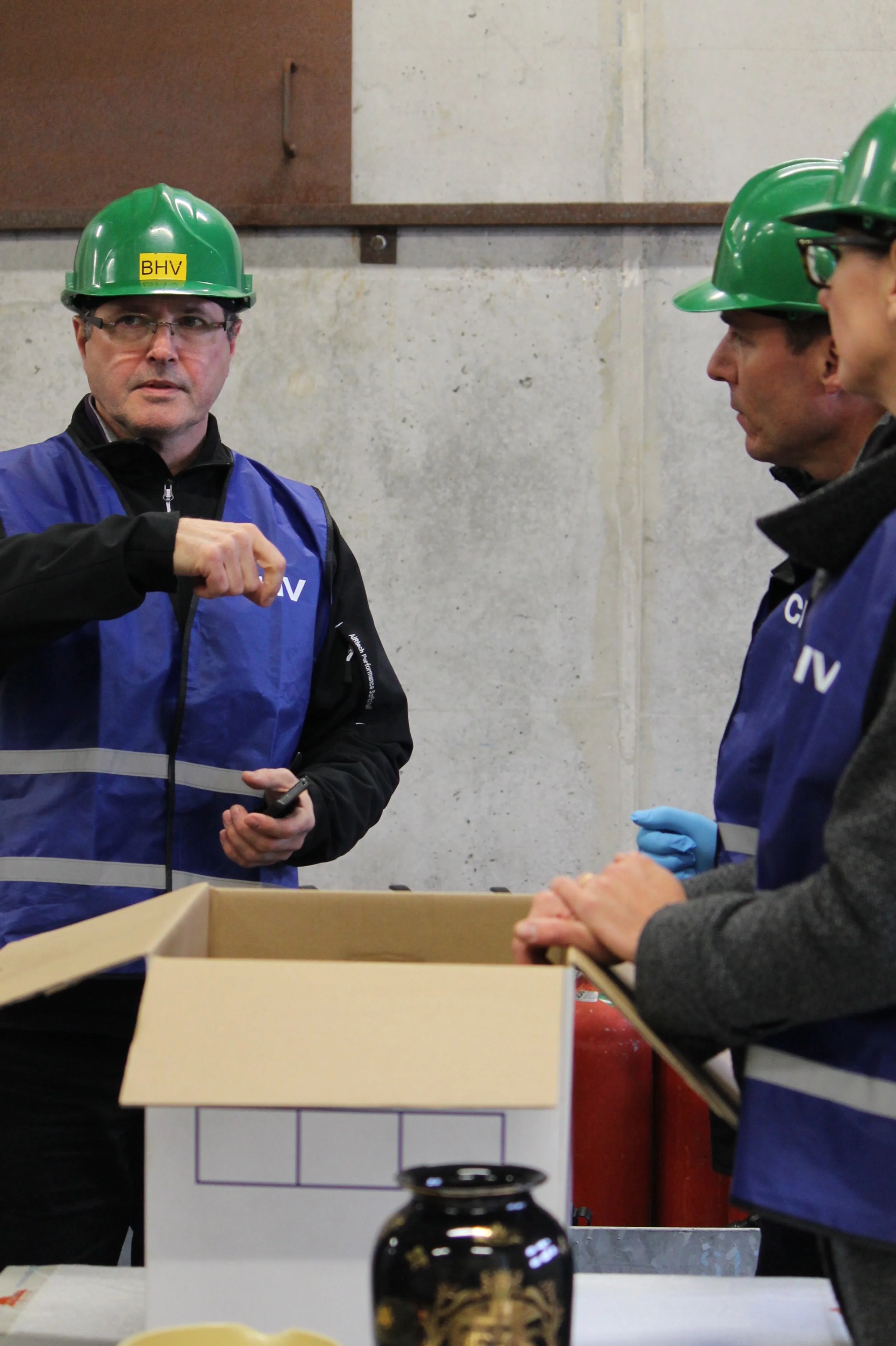
F.A.C.
Disasters that affect collections and objects are sadly a frequent reality in the world of cultural heritage. Of course we all try to keep these at bay as much as possible, but it is essential to the condition and longevity of your collections to prepare yourself ahead of time for these occasions. Jaap offers workshops as well as on-site and off-site assistance and coordination. A disaster can take many forms, from floods to fires and from pest infestations to theft, and Jaap has experience with all of the above.











FIRST AID for COLLECTIONS
There’s a couple of steps involved in the preparation for a disaster as well as taking action on site after a disaster has occurred.
Before any disaster recovery or collection help scheme can be built, a risk assessment should be initiated. From this assessment a series of possible and probable risks will be defined. Once these risks are listed the organisation can decide which of the risks will be tackled in standard operational protocols such as ‘integrated pest management’, ‘climate control’ and ‘registration protocols’. At the other end of the spectrum there will be possible disasters that are so rare and overwhelming , such as an unplanned landing of an aircraft on the building, that a dedicated protocol will be an overkill.
The rest of the identified risks will be tackled in a (disaster recovery plan CHV (Collection Help Plan)).
A disaster recovery plan consist of the following steps:
RISK ASSESSMENT
MITIGATING ACTIONS
EVALUATION OF RISKS &
SETTING PRIORITIES
SETTING UP PROTOCOLS &
LIST OF REQUIREMENTS
ESTABLISHING &
TRAINING TEAM
These plans can be made to measure, whether you are a museum organisation, gallery owner, volunteer based organisation, etc. Don’t hesitate to get in touch via the contact page below to develop a plan suited to your needs.








